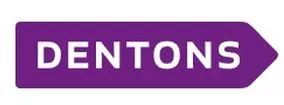- within Finance and Banking, Wealth Management, Food, Drugs, Healthcare and Life Sciences topic(s)
- with Senior Company Executives, HR and Finance and Tax Executives
- with readers working within the Accounting & Consultancy, Banking & Credit and Insurance industries
Under the Fighting Against Forced Labour and Child Labour in Supply Chains Act (S.C. 2023, c. 9) (the Act), which came into force on January 1, 2024, many entities and government institutions must submit an annual report by May 31 of each year to the Minister of Public Safety, detailing their efforts to identify, prevent and reduce forced and child labour in their activities and supply chains. These reports must be made available on the reporting entity's website, and are publicly accessible on Public Safety Canada's online catalogue.
The entities that are subject to the reporting obligations under the Act include those that are listed on a stock exchange in Canada, as well as those that have a place of business or assets in Canada, or that do business in Canada, and meet certain thresholds relating to the value of their assets, the value of their revenues or their number of employees. Among these entities, only those that produce goods, import goods produced outside Canada, or control an entity that is engaged in either of those activities, are subject to the reporting obligation. For more details, please see Dentons' prior publication on this matter.
On December 16, 2024, the Government of Canada announced, in the Fall Economic Statement, its intention to introduce new legislation to create a new supply chain due diligence regime for businesses and government entities. Prior to this announcement, the government had recently updated its guidelines on the existing reporting obligations, introduced in 2023 by the Act.
These announcements follow a period of public consultations held in the fall of 2024 on the existing regime and obligations under the Act, which were expected to be reinforced.
New legislative measures outlined in the 2024 Fall Economic Statement
In the 2024 Fall Economic Statement, the Government of Canada announced its intent to introduce new legislative measures aimed at enhancing Canada's economic security and addressing supply chain risks. A significant focus of the statement is on the eradication of forced labour from Canadian supply chains. The government plans to introduce legislation to create a new supply chain due diligence regime. This regime will require government entities and businesses to scrutinize their international supply chains for risks to fundamental labour rights and take action to resolve these risks. To ensure compliance, a new oversight agency will be established.
Additionally, the government intends to strengthen Canada's ban on imports of goods produced through forced labour. Legislative amendments will increase the onus on importers to demonstrate that their supply chains are free of forced labour. To support the implementation of these new regimes, the statement proposes an allocation of CA$25.1 million over two years, starting in 2025 - 2026, to Global Affairs Canada and the Canada Border Services Agency.
It remains unclear as to when the government will table these new legislative measures in Parliament.
The statement also highlights the global issue of forced labour, noting that 27.6 million people worldwide were subject to forced labour in 2021, with a significant number of victims located in Asia and the Pacific. Women and children are particularly vulnerable. With these measures, Canada aims to step up its efforts to combat forced labour and ensure ethical practices in global supply chains.
Updated guidelines on the reporting process for entities
The first guidelines on the reporting obligations under the Act were published by Public Safety Canada on December 20, 2023. These guidelines, available on Public Safety Canada's website, aim to help entities determine whether they are subject to the reporting obligations of the Act and to assist them in completing and filing the report where required.
Since their initial publication, the guidelines have undergone several updates. The most recent update, published on November 15, 2024, incorporates insights obtained from the first year of mandatory reporting and the public consultations held in the fall of 2024. The updated guidelines provide additional guidance on a variety of topics, including whether an entity is subject to reporting obligations and the process for submitting the report.
Determining whether an entity is subject to reporting obligations
On the question of whether an organization is an "entity," it has been clarified that certain provincial Crown corporations and other provincial and municipal government bodies could fall within the broad interpretation of the definition of "entity," which includes corporations, trusts, partnerships and other unincorporated organizations.
To determine whether an entity does business in Canada, entities may now rely on the factors set out by the Canada Revenue Agency in its GST/HST Policy Statement P-051R2, including the place where goods are produced, sold or distributed and the place where employees are located.
In regard to the question of whether the entity has assets in Canada, only tangible assets are considered, excluding, for example, intellectual property, securities and goodwill.
The update also introduced the following nuance: although all entities must use their consolidated financial statements to determine whether they meet the asset, revenue or employee thresholds under the Act, which will therefore include items from their subsidiaries, the consolidated financial statements of the subsidiaries will not include items from their parent entities. The determination of whether a parent entity and its subsidiary are subject to reporting obligations is therefore made separately, albeit both on the basis of consolidated financial statements.
The updated guidance also clarifies that, although under the Act, the reporting obligations cover entities that produce, sell or distribute goods in Canada or elsewhere or that import goods into Canada, and those that control an entity that engages in any of these activities, entities that are solely engaged in the sale or distribution of goods are not expected to report under the Act and the public authority will not take enforcement action against such entities.
It is specified that, in the context of the production or importation of goods, only physical tangible goods are covered, excluding, for example, real estate, electricity, software services and insurance plans.
In addition, it is specified that only entities that are the actual importers, i.e., those that cause the goods to be brought to Canada, can be considered as importers of goods. This is generally the case for the entity that accounts for, or pays the duties on the goods being imported, but not for customs brokers, express couriers, trade consultants and other third parties authorized to transact business on behalf of the importer, or to account for goods in lieu of the importer.
Although an exception to the reporting obligations exists for entities that import or produce a minimum value of goods, thus excluding "very minor dealings," no specific threshold is established in this respect and it is interpreted in the light of the generally accepted de minimis principles in the context of each entity's business.
How to prepare and produce a report
The recent update clarifies that entities may submit to Public Safety Canada the report prepared for compliance with the legislation of another jurisdiction, provided that the entity ensures that the report includes all the requirements under the Act and that it covers the period in question.
In the case of the optional filing of a joint report between a parent company and its subsidiary which are both subject to the reporting obligation, the questionnaire need only be completed by the entity submitting the report. The report must nevertheless specify all the measures taken individually by each of the subsidiaries.
It is specified in the update that entities may also submit a revised report to make changes to the answers submitted in previously completed questionnaires.
A new section has been added to the updated guidelines, explaining the purpose of completing the questionnaire. Entities are encouraged to use the questionnaire as a resource for developing their reports; however, its format may limit detailed responses. To address this, additional details should be included in the annual report in PDF format (the PDF report), which, unlike the questionnaire, must be approved by the entity's governing body.
Public Safety Canada requires both the questionnaire and the PDF report for compliance, but only the PDF report is made publicly available. It is important to avoid submitting the questionnaire without a complete PDF report, as both documents must be completed to meet the Act's requirements.
The updated guidelines also include instructions for several items of information requested by the questionnaire, indicating how they should be completed.
In the spirit of transparency, Public Safety Canada specifies that if evidence of forced labour or child labour is detected in an entity's supply chains, but no remedial action has been taken, it is sufficient to indicate that fact in the report.
Additionally, a list of suggested measures that could be taken by an entity to assess its effectiveness in ensuring that forced labour and child labour are not used in its activities and supply chains is provided. This list includes, for example, implementing regular reviews or audits of the entity's policies and procedures related to forced labour and child labour.
The updated guidelines emphasize the importance of the attestation of the report, by means of a statement and a signature. The report must be duly approved by the appropriate entity's governing body by the May 31 deadline.
Finally, entities are advised not to include any personal information in the report, other than the name and title of the officials signing the report attestation.
Conclusion
The measures announced by the Government of Canada, as well as the clarification of guidelines for entities, suggest that the government wishes to strengthen the reporting regime with the aim of eradicating forced and child labour, while maximizing companies' compliance with their obligations. However, the prorogation of the Canadian Parliament until March 24, 2025, casts uncertainty on the implementation of these new measures. Therefore, companies have much to gain by staying on the lookout.
As a reminder, reports under the Act are due by May 31, 2025. Should you need help in determining if your organization is subject to reporting requirements under the Fighting Against Forced Labour and Child Labour in Supply Chains Act, if you need assistance filing your report or for any other of your business's legal needs, please contact the authors, Jade Lemieux or Victor Qian.
The authors wish to thank articling student Thomas Doré for his assistance with this article.
About Dentons
Dentons is the world's first polycentric global law firm. A top 20 firm on the Acritas 2015 Global Elite Brand Index, the Firm is committed to challenging the status quo in delivering consistent and uncompromising quality and value in new and inventive ways. Driven to provide clients a competitive edge, and connected to the communities where its clients want to do business, Dentons knows that understanding local cultures is crucial to successfully completing a deal, resolving a dispute or solving a business challenge. Now the world's largest law firm, Dentons' global team builds agile, tailored solutions to meet the local, national and global needs of private and public clients of any size in more than 125 locations serving 50-plus countries. www.dentons.com
The content of this article is intended to provide a general guide to the subject matter. Specialist advice should be sought about your specific circumstances. Specific Questions relating to this article should be addressed directly to the author.



